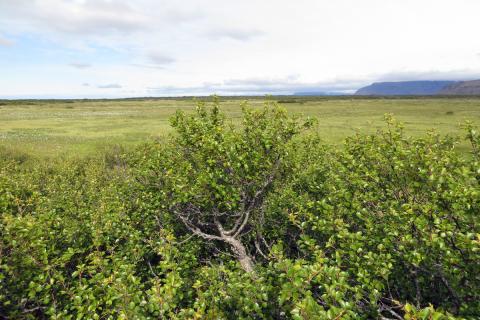FLORA & FUNGA
The Icelandic Institute of Natural History (IINH) is responsible for maintaining checklists of the flora, funga, and fauna of Iceland and for keeping information on species distribution and their habitats. This responsibility extends to all organisms that grow in and around Iceland, including green plants (green algae, mosses, ferns, and vascular plants), red algae, brown algae, and fungi. These organisms belong to different kingdoms in the tree of life, and biologists no longer classify brown algae or fungi as plants. The study of plants (botany), mushrooms and other fungi (mycology), and algae (phycology) are related branches of life science that collectively form one of the IINH’s four main interdepartmental fields of specialisation.
Flora is the collective term for all plant life found in a specific region or period of the Earth’s history. Funga is the corresponding term referring to fungi, including lichen-forming fungi (lichens). Iceland’s flora and funga is thus the sum of all plant species in Iceland. Iceland’s flora and funga is believed to comprise some 5,000-6,000 species. Fungi and algae account for around 2/3 of the total.
IINH biologists conduct research on the systematics and ecologies of plants and fungi in Iceland. Research encompasses both terrestrial and aquatic ecosystems, including freshwater and coastal environments.
